introduction
More and more applications occupy the 30MHz to 300MHz very high frequency (VHF) band. Television and radio, navigation control and amateur radio are just a few examples. New RF component development is targeted at much higher frequency bands used in voice and data communication systems. In order to meet the stringent performance requirements of next-generation radios, significant advances in circuit technology and manufacturing processes are needed. Applying these techniques to lower frequency designs can significantly improve performance.
The LTC®5567 is a wideband mixer designed and optimized for high performance in the 300MHz to 4GHz band. To create a very compact circuit implementation, the LTC5567 has built-in integrated RF and LO transformers. In its specified frequency range, the LTC5567's input IP3 linear performance is excellent, reaching 30dBm. Down to a lower frequency requires a built-in transformer to maintain this linearity and conversion gain. Since the starting point level of linearity is so high, it is worthwhile to change the mixer circuit design and characterize the performance at lower VHF frequencies. The proof of performance is in the test.
Impedance matching design
Figure 1 shows an impedance matching design using the LTC5567. Table 1 lists the design values ​​that still achieve excellent performance with input port matching extended below 300MHz (down to 150MHz). In addition, test results are also provided.
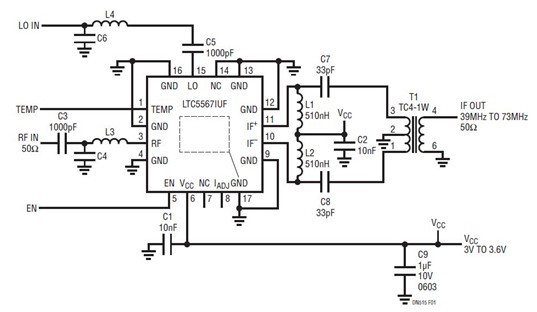
Figure 1: VHF mixer design
Table 1: VHF impedance matching design values 
Figure 2 shows the LTC5567 mixer gain and input IP3 versus input frequency. The mixer's linear performance is improved when the input frequency is close to 150MHz. The input, LO, and output port return loss measurements are shown in Figure 3, Figure 4, and Figure 5, respectively. Overall performance is maintained over the VHF range compared to higher input frequencies. Therefore, when used in a radio design, its high IP3 and conversion gain produce the largest dynamic range. The higher dynamic range minimizes adjacent channel interference and improves selectivity. Although the LTC5567 can operate at input frequencies below 150MHz (when the conversion gain is reduced), this is not recommended as the internal transformer is damaged.
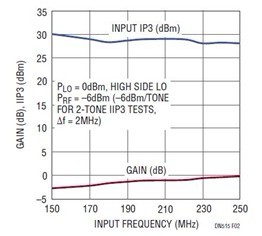
Figure 2: Mixer IIP3 and gain performance measurements 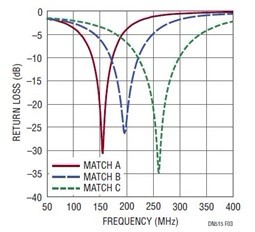
Figure 3: RF input return loss 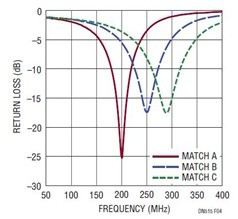
Figure 4: LO Input Return Loss
in conclusion
The LTC5567 provides very high linearity performance at VHF and UHF input frequencies. The high IP3 value and P1dB (Table 2) make this device ideal for high performance radio designs over a wide frequency range.
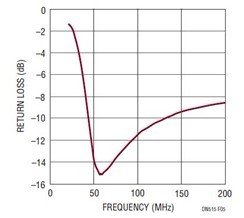
Figure 5: IF Output Return Loss
Table 2: P1dB compression point and LO leakage versus input frequency. Output frequency = 50MHz, HSLO

Off Grid Split Phase Solar Inverter
Shenzhen Jiesai Electric Co.,Ltd , https://www.gootuenergy.com
